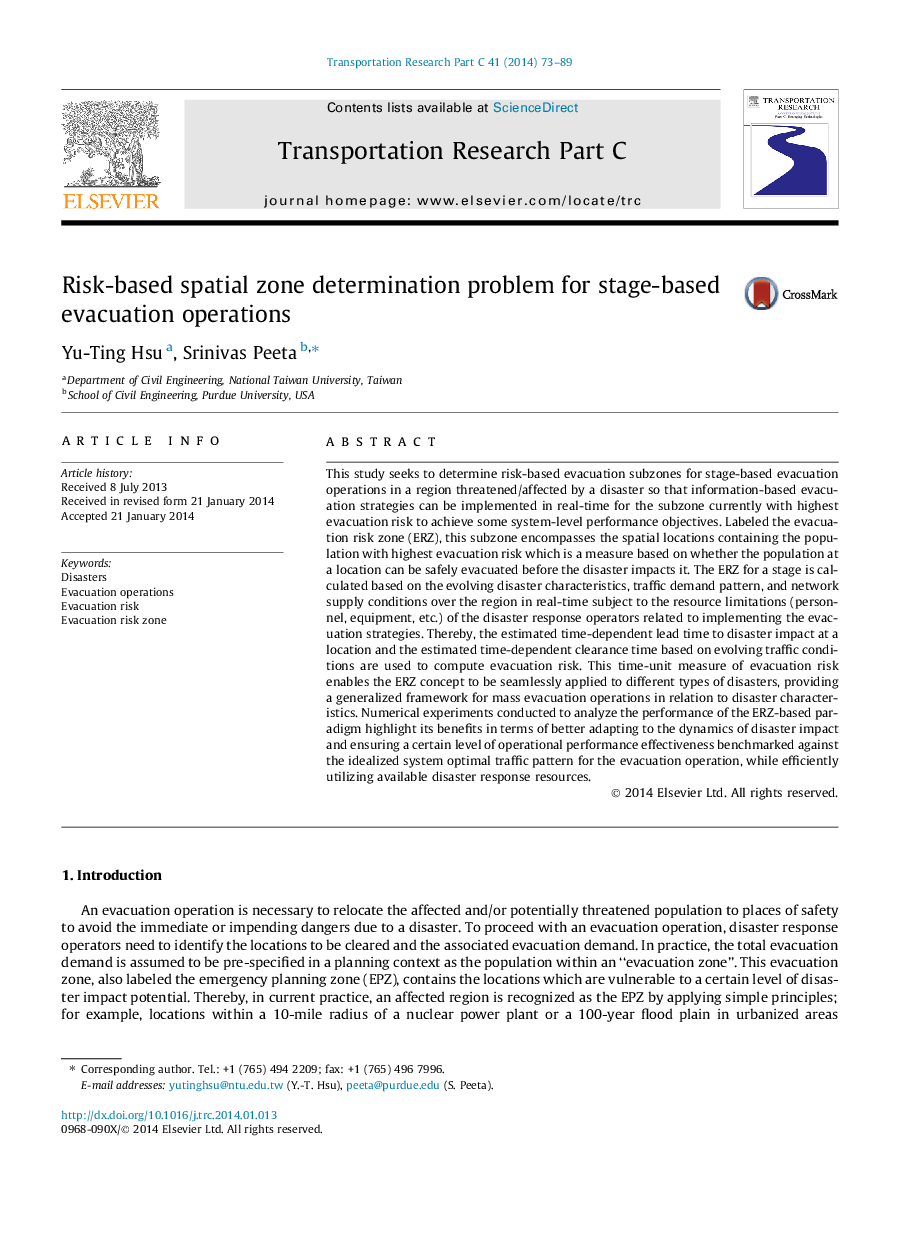| Article ID | Journal | Published Year | Pages | File Type |
|---|---|---|---|---|
| 525189 | Transportation Research Part C: Emerging Technologies | 2014 | 17 Pages |
•We propose evacuation risk as a time-dependent measure.•Evacuation risk captures evolving disaster and traffic conditions simultaneously.•Evacuation risk zone encompasses the population with the highest evacuation risk.•Evacuation risk zone seamlessly enables resource prioritization in operations.•The concept of evacuation risk zone can be applied to different types of disasters.
This study seeks to determine risk-based evacuation subzones for stage-based evacuation operations in a region threatened/affected by a disaster so that information-based evacuation strategies can be implemented in real-time for the subzone currently with highest evacuation risk to achieve some system-level performance objectives. Labeled the evacuation risk zone (ERZ), this subzone encompasses the spatial locations containing the population with highest evacuation risk which is a measure based on whether the population at a location can be safely evacuated before the disaster impacts it. The ERZ for a stage is calculated based on the evolving disaster characteristics, traffic demand pattern, and network supply conditions over the region in real-time subject to the resource limitations (personnel, equipment, etc.) of the disaster response operators related to implementing the evacuation strategies. Thereby, the estimated time-dependent lead time to disaster impact at a location and the estimated time-dependent clearance time based on evolving traffic conditions are used to compute evacuation risk. This time-unit measure of evacuation risk enables the ERZ concept to be seamlessly applied to different types of disasters, providing a generalized framework for mass evacuation operations in relation to disaster characteristics. Numerical experiments conducted to analyze the performance of the ERZ-based paradigm highlight its benefits in terms of better adapting to the dynamics of disaster impact and ensuring a certain level of operational performance effectiveness benchmarked against the idealized system optimal traffic pattern for the evacuation operation, while efficiently utilizing available disaster response resources.
